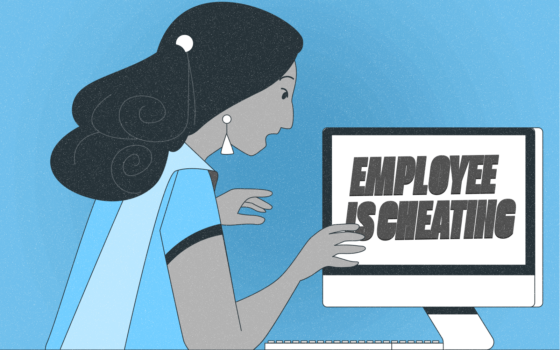Mentoring
Understanding Mentoring in the Workplace
Mentoring is a powerful tool in professional development, fostering growth and knowledge transfer within organizations. It's a relationship where an experienced individual (the mentor) guides and supports a less experienced person (the mentee) in their career journey. This dynamic process goes beyond simple skill transfer, encompassing personal growth, career navigation, and the cultivation of professional networks.
In today's rapidly evolving work environment, mentoring has become more crucial than ever. It serves as a bridge between generations, facilitating the transfer of institutional knowledge and helping organizations maintain their competitive edge. Let's delve deeper into the multifaceted world of mentoring and explore its significance in modern workplaces.
Types of Mentoring Relationships
Mentoring isn't a one-size-fits-all concept. Various types of mentoring relationships exist, each serving different purposes and suiting different organizational contexts:
1. Traditional One-on-One Mentoring
This is the most common form of mentoring, where a senior employee guides a junior colleague. It's characterized by regular meetings and a focus on the mentee's professional development. The mentor shares insights, provides advice, and helps the mentee navigate workplace challenges.
2. Reverse Mentoring
In this innovative approach, younger employees mentor older colleagues, often in areas like technology or current trends. It's an excellent way to bridge generational gaps and foster mutual learning.
3. Peer Mentoring
Here, individuals at similar career stages mentor each other. This type of mentoring is particularly effective for sharing experiences and strategies among peers facing similar challenges.
4. Group Mentoring
In this format, one mentor works with a small group of mentees. It's an efficient way to mentor multiple individuals simultaneously and can create a supportive community among mentees.
5. Virtual Mentoring
With the rise of remote work, virtual mentoring has gained popularity. It allows mentoring relationships to thrive regardless of geographical location, leveraging technology for communication and collaboration.
Benefits of Mentoring Programs
Implementing a mentoring program can yield numerous benefits for both individuals and organizations:
For Mentees:
- Career Advancement: Mentees often gain insights that accelerate their career progression.
- Skill Development: They acquire new skills and knowledge directly from experienced professionals.
- Networking Opportunities: Mentoring relationships often open doors to valuable professional networks.
- Increased Confidence: Regular guidance and support can boost a mentee's self-assurance in their role.
For Mentors:
- Leadership Development: Mentoring hones leadership and coaching skills.
- Fresh Perspectives: Interacting with mentees can provide mentors with new insights and ideas.
- Personal Satisfaction: Many mentors find the experience of guiding others deeply rewarding.
- Reinforced Knowledge: Explaining concepts to others often deepens the mentor's own understanding.
For Organizations:
- Improved Retention: Employees involved in mentoring programs often feel more valued and are likley to stay with the company longer.
- Knowledge Transfer: Mentoring facilitates the passing of crucial institutional knowledge between employees.
- Enhanced Company Culture: It fosters a culture of continuous learning and support.
- Succession Planning: Mentoring can help identify and prepare future leaders within the organization.
Implementing an Effective Mentoring Program
Creating a successful mentoring program requires careful planning and execution. Here are key steps to consider:
1. Define Clear Objectives
Start by outlining what you want to achieve with your mentoring program. Is it to improve retention rates, develop leadership skills, or facilitate knowledge transfer? Clear objectives will guide the program's structure and help measure its success.
2. Establish Program Structure
Decide on the type of mentoring that best suits your organization's needs. Will it be one-on-one, group mentoring, or a combination? Determine the duration of mentoring relationships and the frequency of meetings.
3. Select and Match Participants
Develop criteria for selecting mentors and mentees. Consider factors like experience, skills, and personal goals when matching pairs. Some organizations use mentoring software to facilitate this process.
4. Provide Training
Both mentors and mentees should receive training on their roles and responsibilities. This might include communication skills, goal-setting techniques, and how to give and receive feedback effectively.
5. Set Expectations
Clearly communicate what is expected from both mentors and mentees. This includes time commitments, confidentiality requirements, and the scope of the mentoring relationship.
6. Offer Support and Resources
Provide ongoing support to participants. This could include regular check-ins, resources like mentoring guides or worksheets, and a platform for sharing experiences.
7. Monitor and Evaluate
Regularly assess the program's effectiveness. Collect feedback from participants and track relevant metrics like employee satisfaction and retention rates.
Challenges in Mentoring and How to Overcome Them
While mentoring offers numerous benefits, it's not without its challenges. Being aware of these potential pitfalls can help organizations create more robust and effective mentoring programs.
1. Time Constraints
Challenge: Both mentors and mentees often struggle to find time for regular meetings amidst busy schedules.
Solution: Encourage participants to schedule mentoring sessions in advance and treat them as important appointments. Consider incorporating mentoring into work hours to show organizational support.
2. Mismatched Pairs
Challenge: Sometimes, mentor-mentee pairs may not be compatible in terms of personality or goals.
Solution: Implement a thorough matching process that considers multiple factors. Allow for a trial period and be open to re-matching if necessary.
3. Lack of Structure
Challenge: Without clear guidelines, mentoring relationships can lack direction and purpose.
Solution: Provide a framework for mentoring sessions, including suggested topics and goals. Offer tools like mentoring agreements to help pairs define their objectives.
4. Maintaining Momentum
Challenge: Initial enthusiasm may wane over time, leading to decreased engagement.
Solution: Regular check-ins from program coordinators can help keep pairs on track. Organize events or workshops for all participants to reinvigorate interest and share experiences.
5. Measuring Success
Challenge: It can be difficult to quantify the success of mentoring programs, especially in the short term.
Solution: Establish both qualitative and quantitative metrics at the outset. These might include participant satisfaction surveys, career progression tracking, and retention rates.
The Future of Mentoring
As the workplace continues to evolve, so too does the practice of mentoring. Several trends are shaping the future of mentoring programs:
1. Technology Integration
Mentoring platforms and apps are becoming increasingly sophisticated, offering features like AI-powered matching, progress tracking, and virtual meeting spaces. These tools can make mentoring programs more accessible and easier to manage, especially for large or geographically dispersed organizations.
2. Micro-Mentoring
Short-term, focused mentoring relationships are gaining popularity. These brief engagements allow individuals to seek guidance on specific issues or skills, catering to the fast-paced nature of modern work environments.
3. Cross-Company Mentoring
Some organizations are exploring mentoring partnerships with other companies, allowing employees to gain diverse perspectives and expand their networks beyond their immediate work environment.
4. Inclusive Mentoring
There's a growing emphasis on using mentoring to promote diversity and inclusion in the workplace. This includes targeted programs for underrepresented groups and training mentors in cultural competence.
5. Skills-Based Mentoring
As the skills required in the workplace rapidly change, mentoring programs are becoming more focused on specific skill development rather than general career guidance.
Best Practices for Mentors and Mentees
For a mentoring relationship to be truly effective, both parties need to approach it with the right mindset and practices.
For Mentors:
- Active Listening: Pay full attention to your mentee and practice empathetic listening.
- Set Clear Boundaries: Be clear about what you can and cannot offer in terms of time and support.
- Encourage Independence: Guide your mentee towards finding their own solutions rather than always providing answers.
- Share Personal Experiences: Don't be afraid to discuss your own challenges and how you overcame them.
- Provide Constructive Feedback: Offer specific, actionable feedback that helps your mentee grow.
For Mentees:
- Be Proactive: Take initiative in scheduling meetings and setting the agenda.
- Come Prepared: Have specific questions or topics you want to discuss in each session.
- Be Open to Feedback: View constructive criticism as an opportunity for growth.
- Follow Through: Act on the advice and suggestions provided by your mentor.
- Show Appreciation: Recognize and thank your mentor for their time and insights.
Conclusion: The Enduring Value of Mentoring
In an era of rapid technological advancement and changing work dynamics, the human element of mentoring remains invaluable. It provides a unique blend of personal development, knowledge transfer, and relationship-building that is difficult to replicate through other means.
Effective mentoring programs can be a powerful tool for organizations looking to develop their talent, improve employee engagement, and create a culture of continuous learning. For individuals, being involved in a mentoring relationship – whether as a mentor or mentee – can be a transformative experience, offering new perspectives, skills, and opportunities for growth.
As we look to the future, mentoring will likely continue to evolve, adapting to new workplace realities and leveraging emerging technologies. However, its core essence – the sharing of wisdom and experience to foster personal and professional development – will remain a timeless and invaluable practice in the world of work.
By embracing mentoring and implementing well-structured programs, organizations can create a legacy of knowledge sharing and support that benefits not just individuals, but the entire business ecosystem. In doing so, they lay the foundation for a more skilled, engaged, and resilient workforce ready to meet the challenges of today and tomorrow.


